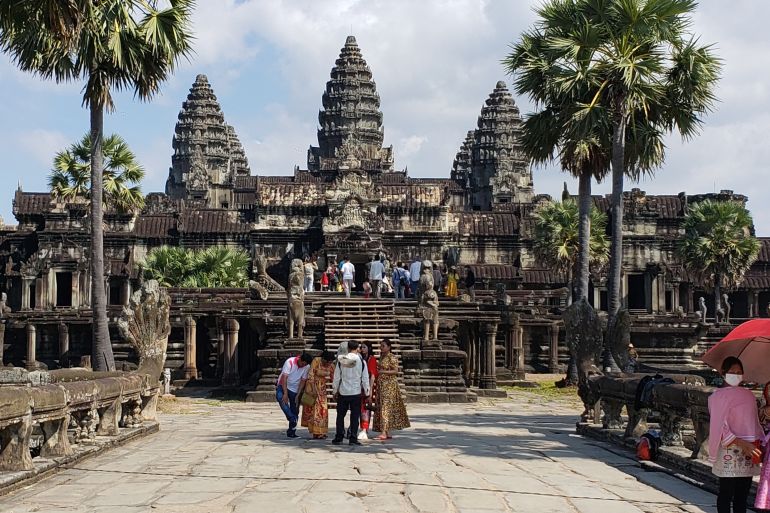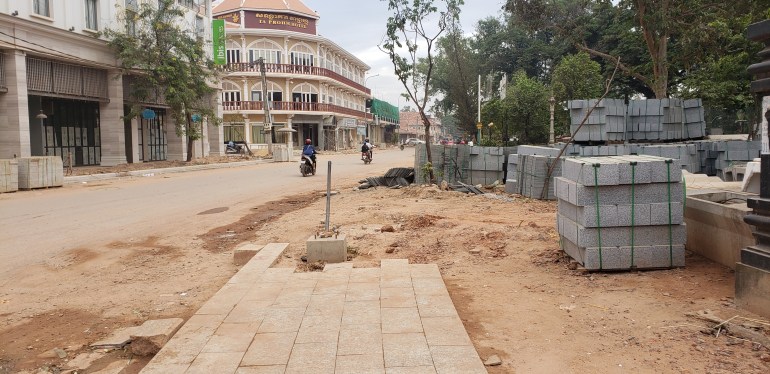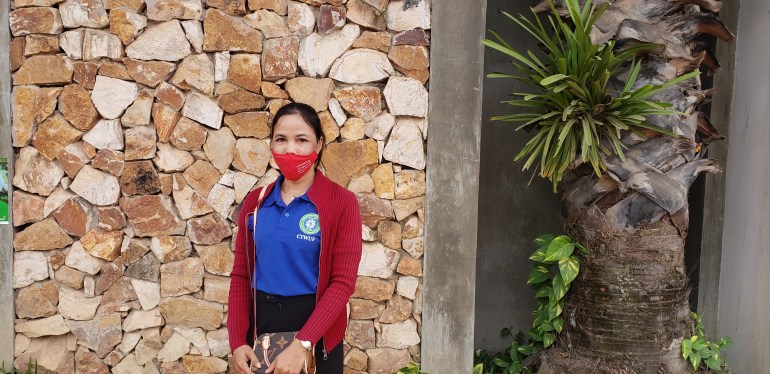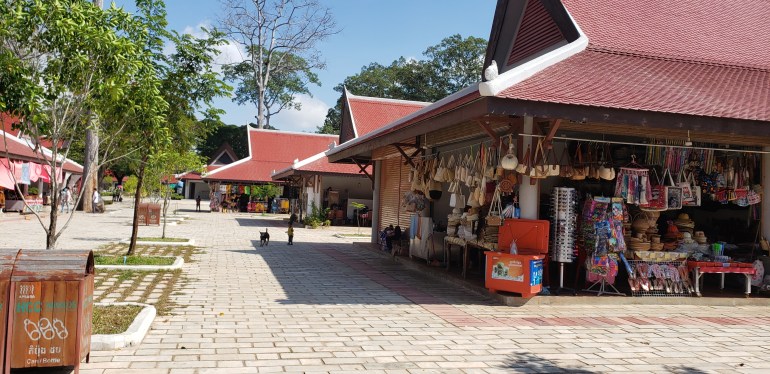‘Just surviving’: For Cambodian tourism, recovery out of sight
Siem Reap is welcoming few foreign tourists weeks after Cambodia opened its borders to vaccinated travellers.

Siem Reap, Cambodia – Chheut Dina was only a few days into her reduced shift cleaning Siem Reap International Airport when she was told not to come back to work.
After 10 months with practically no tourism, the airport dropped its contract with Dina’s employer in December 2020, forcing her to cut spending on her family of seven and refinance an $11,000 loan she took out before the pandemic. HCC Angkor, the cleaning company contracted by the airport, had earlier reduced Dina and her colleagues’ employment to just one month out of the year due to COVID-19 restrictions.
Keep reading
list of 4 itemsHow has COVID-19 affected global economy?
Endless pandemic? Asia’s Omicron retreat shows COVID is political
Flush with vaccines, Asia sees return to normal slip out of reach
“Sometimes my kids, when they don’t have to study, they go to the pond or creek or lake to catch fish or snails and vegetables, so we spend less than [before] but we eat less proper food than before,” Dina told Al Jazeera.
With support from her union, Dina and the other HCC employees complained to the company, frustrated that management refused to confirm if they had been fired or just suspended.
The uncertainty around their future has been especially frustrating since the airport started to receive international flights following the country’s reopening of its borders to vaccinated tourists last month.
“If they want to dismiss us from the contract, they need to pay us proper compensation according to the law, then we can look for other job opportunities or get compensation,” Dina said. “This creates a blurred picture, we don’t really know what is going on.”

Although Cambodia has reopened to international travellers, its tourism centre of Siem Reap, home to UNESCO World Heritage site Angkor Wat, is still reckoning with its reliance on foreigners and the long and unpredictable path towards recovery from the pandemic.
Cambodia’s Prime Minister Hun Sen lifted quarantine measures for all vaccinated travellers on November 15 – a step beyond Thailand’s reopening, which this week reintroduced seven to 10 days of quarantine for foreign arrivals, except those visiting the Phuket “sandbox,” in response to the Omicron variant.
Arrivals, however, have been few and far between. Before Singapore Airlines resumed its service last week, the city’s airport had not seen a single international flight for 20 months.
Even before the pandemic, Siem Reap, which relied heavily on Chinese tour groups that have since disappeared, had been showing signs of fatigue, with Angkor Archaeological Park ticket sales down 8.3 percent in 2019 compared with the previous year, according to the World Bank.
Khek Norinda, communications director for Cambodia Airports, told Al Jazeera visitors fell 12.4 percent in 2019 compared with 2018, before plummeting further during the pandemic. Before Singapore Airlines resumed its service last week, the city’s airport had not seen a single international flight for 20 months.
While predicting a gradual recovery, Norinda said the return of the airline showed there was still an “appetite” for visiting Siem Reap.
“Also, the experience of visiting the temples without crowds and the hustle and bustle could play in its favour,” he said.
Thourn Sinan, the Cambodian representative for the Pacific Asia Travel Association, told Al Jazeera the government did not clearly communicate its pandemic policies, making it hard for his industry to respond.
“They have very good planning” for the industry in general, he said. “But on the other side with the pandemic era [continuing], they cannot decide what to do.”

During the pandemic, the provincial government has sought to beautify the city, widening roads and creating gardens and walking paths in front of Angkor Wat, the impressive tiered temple that is stamped on Cambodia’s currency.
Many businesses in the vicinity of the famous attraction – which is surrounded by family-run restaurants, clothing stalls, and artists displaying paintings and other souvenirs – complain the renovations have cost them customers.
A drink vendor outside Angkor Wat told Al Jazeera that small businesses were struggling, despite a spirit of collaboration among vendors who had decided to stay in the park.
She said felt guilty charging a lodger at her property $150 per month: “I want to get all the money [I can] but I’m not happy, because for them it’s not easier than it is for us.”
Sinan, the Pacific Asia Travel Association representative, said he doubted tourism in Cambodia would return to pre-pandemic levels for five to seven years, despite knowing tour operators who had invested in their business due to the border reopening.
“The new investments they [businesses] put in, this is probably the last investment [possible] for them, but if there’s no international tourists’ investment for them, they’ll keep losing,” he said.
Near the start of the pandemic, the Ministry of Labour and Vocational Training promised to provide furloughed workers in the tourism and garment industries $40 per month and compel employers to pay a further $30 per month. Apart from criticism the support was not enough, union leaders complained many workers were excluded from the assistance.
Dina, the airport cleaner, said she was not able to receive COVID-19 support payments nor healthcare through the national social security fund, making it hard to pay for her elderly parents’ medical expenses.
“Sometimes we don’t have money for that so we borrow around to put it together to make it,” she said.

Norinda said Cambodia Airports sought to prioritise the welfare of its staff during the pandemic, but “unfortunately” had to cut its relationship with HCC in Siem Reap.
With Cambodia reporting few COVID-19 cases – there have been no more than 25 daily infections since the start of December – domestic tourism, especially to ecotourism sites, has provided some light relief for the industry.
Chhay Sivlin, president of the Cambodian Association of Travel Agents, told Al Jazeera more domestic visitors visited Siem Reap’s temples, but they tended to spend less than foreign tourists.
“The travel culture of Cambodians [is that they] do not feel the need to hire tour guides nor do they require the assistance of local travel agents,” she said.
Sinan said he did not believe the city could count on the return of Chinese tourists, who were more interested in a COVID-free life in China than the “new normal” elsewhere.
He said Southeast Asian countries could fill the vacuum if they learned from Europe, where many residents holidayed during the summer on vaccine passports.
“I think ASEAN should be able to have a fast recovery in terms of tourism if ASEAN [members] can trust each other,” he said.
‘Waiting for the tourists’
For now, Siem Reap’s residents must make the best of difficult circumstances.
Before the pandemic, Doung Visith used to earn a comfortable $50 every time he led a tour of Angkor Wat. These days, Visith, who has a part-time job with a hospitality company, spends his mornings trying to convince locals to hire him for a short sunrise tour priced at $20, before spending the afternoon beckoning visitors to the newly renovated restaurants and shops in front of the temple.
Although he appreciates the manicured facade of the park, he wishes there were foreign tourists there to see it.
“We’re just surviving, waiting for the tourists to come again,” he said.